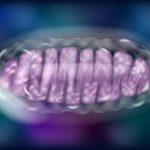Medical Resources for NDs
Reviews of Current and Useful Publications
Jacob Schor, ND
Enteroimmunology: An Introduction to the Enteric Immune System and Clinical Guide to Treatment of Enteroimmune Diseases
On November 2, 1998, PBS aired an episode of the children’s show, Arthur, entitled “The Chips are Down.” In this episode, Arthur and Buster trick DW into thinking that the big green potato chip she ate was poisonous. Binky eats one too and both make the best of the last days of their lives. Among the anthropomorphic aardvarks that populate this cartoon series, Binky is the grade-school bully. He takes up ballet lessons. After all these years, I now understand why green potatoes are poisonous.
I know all about green potatoes because Charles Alan Lewis, the author of the book, Enteroimmunology, has an admirable habit of providing the sorts of extra details that border on trivia, but which make the book fascinating to read.
Enteroimmunology is defined as the prevention and treatment of diseases that are initiated in the intestine. Our naturopathic view of health suggests that most diseases are initiated and cured in the intestine. The information covered in this book thus should be the foundation of our practices. Yet much of it was new to me. My undergraduate training was as a food scientist and I’ve been in naturopathic practice for more than 2 decades. I had no idea how little I understood about digestion and the mishaps that interfere with it until I read this book.
Of course, I know the basics: Half of our immune cells guard the intestinal borders, the gut microflora far outnumber the cells in our body, dybiosis give rise to no end of problems. We certainly know those basic facts, but that’s it. We rarely consider digestion in the depth we should to help the patients who come through our doors. In this book, Lewis provides more of the information we need to be helpful to our patients..
Framing the gut as an immune control system that regulates other diseases provides a way to understand and treat a wide range of conditions not commonly associated with gastrointestinal function. Pain, fibromyalgia, autoimmune diseases, inflammatory diseases, and mood disorders can all be considered diseases of gut immunity.
Lewis brings together and presents in a logical and comprehensive manner much of the scattered information we are aware of, but he writes about it in greater detail and richer depth than we would normally find.
The first 8 chapters of the book review digestive function, with separate chapters on digestion of carbohydrates, fats, proteins, the bowel’s inhabitants, and the various functional mishaps that give rise to maldigestion, in particular flatulence and diarrhea. Lewis has created numerous charts and lists to summarize the information.
Lewis has an appreciation for clinical pearls and trivia that was to my liking but which prevented me from skimming the material. I didn’t want to miss anything. Typically I use textbooks to look up details, to read up on a particular topic. This book, by contrast, is a text you will want to read page by page. What’s worse is that I now want to go back and re-read some sections so as not to forget the details. That says a lot about the material.
Chapters 8 and 9 cover metabolic syndrome, the evolutionary blame for which Lewis lays on a pair of meteors that hit Europe 14 million years ago. Chapters 10 through 16 cover immune cells, hypersensitivity, IgE food reactions, mast cell disorders, bioactive amines and mast cells that cause pseudo-allergies, leukotriene-associated hypersensitivity, and reactions to enzymes in food and the effects of cooking on these reactions. Obviously, indigestion involves more than food intolerance or food allergy.
Chapters 17 through 23 address immune hypersensitivity reactions, chocolate, wine, vitamin D, gluten diseases, biofilms and dysbiosis, and mitochondrial oxidation in further detail.
Once a foundation of understanding intestinal dysfunction has been laid, Lewis addresses the problems that we see in our patients and writes about how to treat them. Chapters 24 to 36 tackle small intestinal bacterial overgrowth, leaky gut, irritable bowel, interstitial cystitis, headaches, hypothalamic-pituitary problems, mood disorders, fibromyalgia, autoimmune disease, sexual function, autism, acne, rage, sleep, cancer, and osteoporosis.
The book is divided into 42 chapters. In these chapters Lewis provides concise, well-referenced summaries of the current knowledge, providing solid and useful information of clinical utility.
Lewis does not simply tell us that inflammatory bowel disease (IBD) patients, in particular those with ulcerative colitis, should avoid potatoes; he explains why potatoes are a problem, providing half-a-dozen or so mechanisms. Perhaps the most interesting explanation is that potatoes contain glycoalkaloids, in particular solanine and chaconine, that induce changes to the mucosal membrane integrity of the intestine and, in mouse models, increase colonic permeability. The amount of glycoalkaloids in potatoes vary according to a number of factors, including injury during harvesting and, perhaps most important, sun exposure. Most of the glycoalkaloids are close to the skin of the potato. These toxins are useful to the potato because they discourage insects and other animals from eating the tubers. Light exposure triggers production of more toxins. The greenish tint in potatoes is from chlorophyll forming in response to sun exposure, but this green color closely correlates with higher glycoalkaloid levels as well. Cooking does not destroy these alkaloids. Sprouted potatoes should never be eaten. Green potatoes may not kill you, but they are certainly not good for your health and are clearly bad for patients with IBD.
Thus we have one more useful thing that our kids learned by watching Arthur on PBS.
This is not just a nice book, it is the textbook for a course that was missing in naturopathic medical school. The book contains information fundamental to our daily practices and can help explain what is behind some of the weird and peculiar GI problems that our patients complain about.
The book is not perfect. While the information contained in it is excellent, the production is less so. It was self-published and clearly lacks the benefit of a copy editor to find and correct mistakes. There is an abundance of small errors and typos. The big words are correct; it’s the small words that are misplaced, misused, and misspelled. It feels amateurish. The charts contain useful information but they too would have benefited from a graphic designer. The index is 1 page long and is inadequate; it does not even list fructose, flatulence, thyroid, or even diarrhea. It is customary for many skilled people to contribute to transforming content into a polished publication, people who just weren’t there in this case. Assuming that these problems will be remedied in the next edition, I’d suggest you put this on your required reading list.
Title: Enteroimmunology: An Introduction to the Enteric Immune System and Clinical Guide to Treatment of Enteroimmune Diseases
Author: Charles Alan Lewis, MD
Publisher: Psy Press
Pages: 450
Style: Soft Cover
Copyright: 2012
Amazon: $71.96
Jacob Schor, ND, FABNO is a 1991 graduate of NCNM and has practiced in Denver for the past 17 years. He served as president of the CANP from 1992 to 1999. He has served on the board of directors of the OncANP since 2006 and currently acts as secretary to the board. He is a Fellow of the ABNO. He was utterly shocked and humbled at the 2008 convention of the AANP to be presented with the Vis Award, an honor bestowed in the memory of William Mitchell. He is incredibly lucky to practice with his wife, Rena Bloom, ND. Dr Schor writes newsletters for his patients that are popular with doctors and students. Visit www.DenverNaturopathic.com. You can contact Dr Schor at [email protected].








